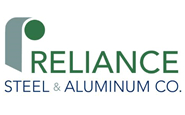Distributors/Service Centers

February 17, 2022
Reliance Reports Record $14 Billion in Sales in 2021
Written by Tim Triplett
Reliance Steel & Aluminum Co. “finished the year strong with record financial performance across nearly every metric,” CEO Jim Hoffman said during the service center’s earnings call on Thursday. Reliance reported record annual gross profits of $4.49 billion on record annual sales of $14.09 billion for full-year 2021.
![]() The fourth quarter was also the best in the company’s history with gross profit of $1.24 billion on sales of $3.99 billion.
The fourth quarter was also the best in the company’s history with gross profit of $1.24 billion on sales of $3.99 billion.
“The durability and effectiveness of our model is apparent in our results despite macroeconomic challenges, including the continuing pandemic, supply-chain disruptions and a tight labor market,” Hoffman said.
The company attributes some of its success to its continuing investment in value-added processing capabilities, as evidenced by its $350 million capex budget this year. In 2021, Reliance performed value-added processing on over 50% of its orders. “We believe our ongoing focus on value-added processing will continue to support our strong gross profit margin levels, and help stabilize our margins in times of declining prices,” Hoffman said.
Reliance spent $439 million on four acquisitions in 2021— Merfish United, Nu-Tech Precision Metals, Admiral Metals Servicenter Company and Rotax Metals—extending its reach in new product categories and geographies. These new additions to its family of companies add approximately $1 billion in annualized sales to Reliance.
During the fourth quarter, the company’s tons sold decreased 5.7% compared to the third quarter in line with seasonal expectations. Tons sold were also impacted by labor-related shortages at Reliance, its customers and suppliers. Company executives said they continue to believe underlying demand is stronger than the fourth-quarter shipment levels reflect, which bodes well for 2022.
Looking ahead, Reliance is generally optimistic about forecasted activity in nonresidential construction, automotive toll processing and heavy equipment despite supply-chain disruptions, labor constraints and the effects of Omicron. It reports particular strength in semiconductors, one of Reliance’s strongest end markets, as well as energy, which is benefiting from higher oil and natural gas prices. Demand in commercial aerospace is expected to continually improve throughout 2022 as build rates increase.
Despite significant pricing declines for carbon hot-rolled coil and sheet products, Reliance expects its average selling price per ton sold in the first quarter to decline by only 2-4% thanks to the company’s diverse product mix.
Reliance executives said they remain optimistic about business conditions in early 2022 with solid underlying demand across most key end markets in spite of ongoing supply-chain and labor challenges.
Los Angeles-based Reliance operates 300 locations in 40 states and 13 countries outside of the United States, focusing on small orders with quick turnaround and increasing levels of value-added processing.
By Tim Triplett, Tim@SteelMarketUpdate.com





